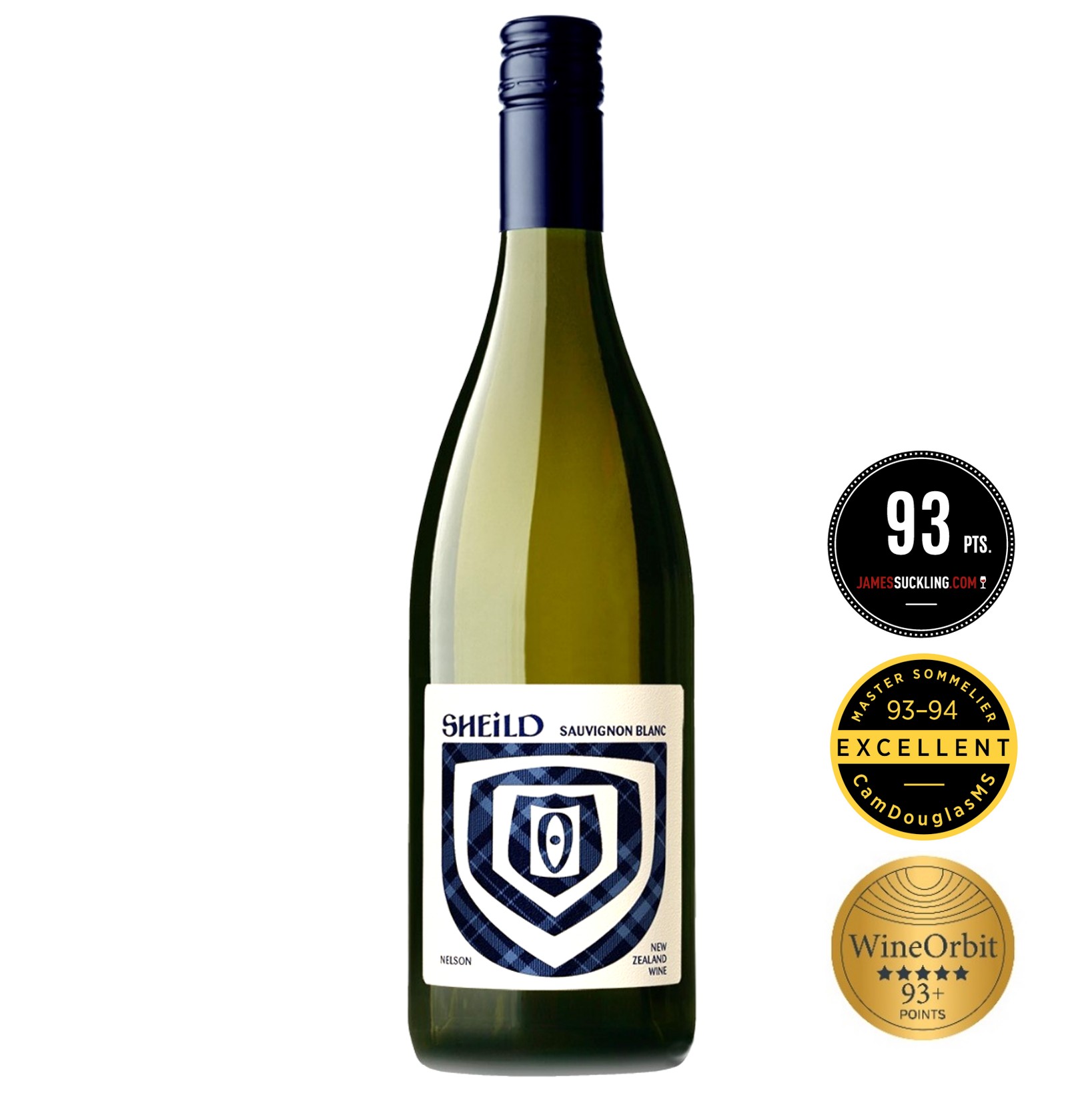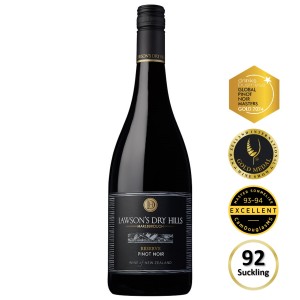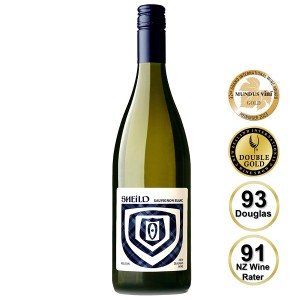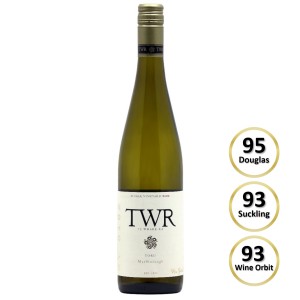SHEILD Albarino 2023
16,99 € - 17,99 €
23,99 € pro Liter
incl. statutory VAT excl. shipping costs
delivery time ca. 2-4 Werktage
Product.Nr. 2218
A Spanish grape with a New Zealand touch.
Discount
| Quantity | Single price | Saving | pro Liter |
|---|---|---|---|
| 1-5 | 17,99 € | 23,99 € | |
| >= 6 | 16,99 € | -6 % | 22,65 € |
product description
SHEILD Albarino 2023
Reviews
 James Suckling (JamesSuckling.com): 93/100. Showing sliced-pear and green-apple puree as well as crushed stones. It’s medium-bodied with attractive fruit and a clean finish. Says albarino when you taste it. Drink now.
James Suckling (JamesSuckling.com): 93/100. Showing sliced-pear and green-apple puree as well as crushed stones. It’s medium-bodied with attractive fruit and a clean finish. Says albarino when you taste it. Drink now.
 Cameron Douglas MS: 93/100. Delicious, taut, youthful and dry. A wine that touches the palate with fruit and power. Flavours of peaches and sweet citrus, apple and lemon, some white flowers and moments of cape gooseberry. The acidity is significant and along with a fine saline touch ensures this wine will age well, the fruit power is also noteworthy and will also stand the test of time. A dry wine on the finish and while it is so youthful still needs food to tame it just a little ( a squeeze of lemon juice on fish). Well made, lengthy and ready to drink from late 2024 through 2029.
Cameron Douglas MS: 93/100. Delicious, taut, youthful and dry. A wine that touches the palate with fruit and power. Flavours of peaches and sweet citrus, apple and lemon, some white flowers and moments of cape gooseberry. The acidity is significant and along with a fine saline touch ensures this wine will age well, the fruit power is also noteworthy and will also stand the test of time. A dry wine on the finish and while it is so youthful still needs food to tame it just a little ( a squeeze of lemon juice on fish). Well made, lengthy and ready to drink from late 2024 through 2029.
 Sam Kim, Wine Orbit: 93/100. Pristine and elegantly expressed, the bouquet shows crunchy apple, apricot, green pear and white floral nuances, followed by a finely focused palate delivering bright fruit flavours with vibrant acidity, making it mouth-watering and lingering. At its best: now to 2026.
Sam Kim, Wine Orbit: 93/100. Pristine and elegantly expressed, the bouquet shows crunchy apple, apricot, green pear and white floral nuances, followed by a finely focused palate delivering bright fruit flavours with vibrant acidity, making it mouth-watering and lingering. At its best: now to 2026.
Tasting note
Lemon in colour, it has pronounced primary aromatics of lime, peach, florals, and salty oyster shell. Secondary aromas hint at lees contact and a wine rich in terpenes. This wine has excellent attack thanks to the brisk acidity and continues on to offer a pleasing, layered mouth filling experience.
Aromas and flavours:




Additional information
Type: white wine from New Zealand
Varietal: Albarino
Food match: A gentle salinity typical to the variety means it pairs fabulously with Kaimoana and crisp garden-fresh salads.
Vineyard: Whenua Matua, Nelson, New Zealand.
Soil type: Moutere clay bound gravels.
Vine Age: 8 years.
Vintage 2023: local sea temperatures remained warmish and influenced the land. Precipitation on the other hand was frequent, and sometimes heavy. Budburst was again early as we have become accustomed to with the La Nina dominant weather umbrella. Spring growth was also vigorous with water at field capacity in the soils, and warmer temperatures. The energetic spring conditions proved challenging for flowering and fruitset resulting in variability within varieties and across regional sites. Periodic rain events continued through summer and the vineyard vigor continued as well. Temperatures remained warm so fruit development was not retarded. Fingers were crossed from verasion and with a large amount of luck the rain held off and fruit was allowed to ripen and be harvested. Picking started early March with the Rose and was completed in a relatively short four week period. Grapes were once again clean and ripe.
Regional climate: Nelson’s sheltered topography gives protection from strong winds; combined with its proximity to the sea this gives milder temperatures than other South Island regions, mitigating frost risk. Regularly New Zealand’s sunniest region and with good diurnal variation this helps emphasise varietal character. High sunlight hours and a long growing season give wonderful fruit purity.
Winemaking: This small planting of Albarino enjoys a sheltered microclimate, nestled in the Upper Moutere Hills. The fruit was machine harvested on the 3rd of April and carted to the winery during which time it was able to benefit from skin contact with the juice, maximising f lavour precursors available in the juice. On arrival it was further destemmed and lightly crushed to the press. The press cycle carefully monitored, and the hard pressings separated off. The juices were cold settled for an extended period to achieve a high level of clarification. The free run and pressings were then racked to recombine and warmed for inoculation. A yeast strain traditionally used on Riesling was chosen for the ability to emphasize a real breeziness of character. The ensuing ferment was stretched over a three-week period using cooling, protecting the glorious secondary aromas created thanks to those aroma precursors and the fermentation process. The ferment was arrested with 5.8g/l residual sugar but by no means appears sweet. This small lick of sugar serving only to balance the icy acidity this variety is revered for. The wine was racked off gross yeast lees and left to sit on fine lees for a period of 4 months before finishing for bottling in the last week of October.
Alcohol: 13% vol
Residual sugar: 5.8 g/l
TA: 9 g/l
Bottle size: 0.75l
Notice: contains sulphites
Cellaring potential: 2026+
Closure: Screwcap
Produced and bottled by: Drinks Cabinet Limited, Atawhai, Nelson 7010, New Zealand
Imported by: vinabonus GmbH, Simmedenweg 40, 34134 Kassel, Germany























 Switzerland
Switzerland